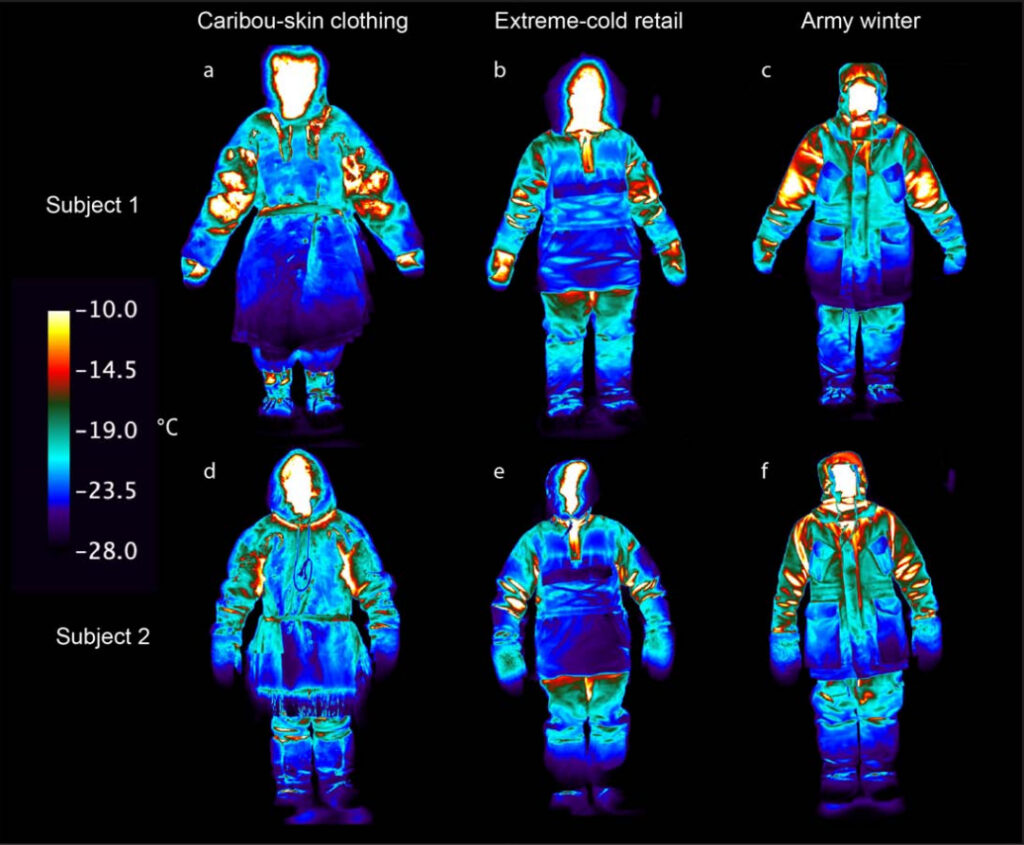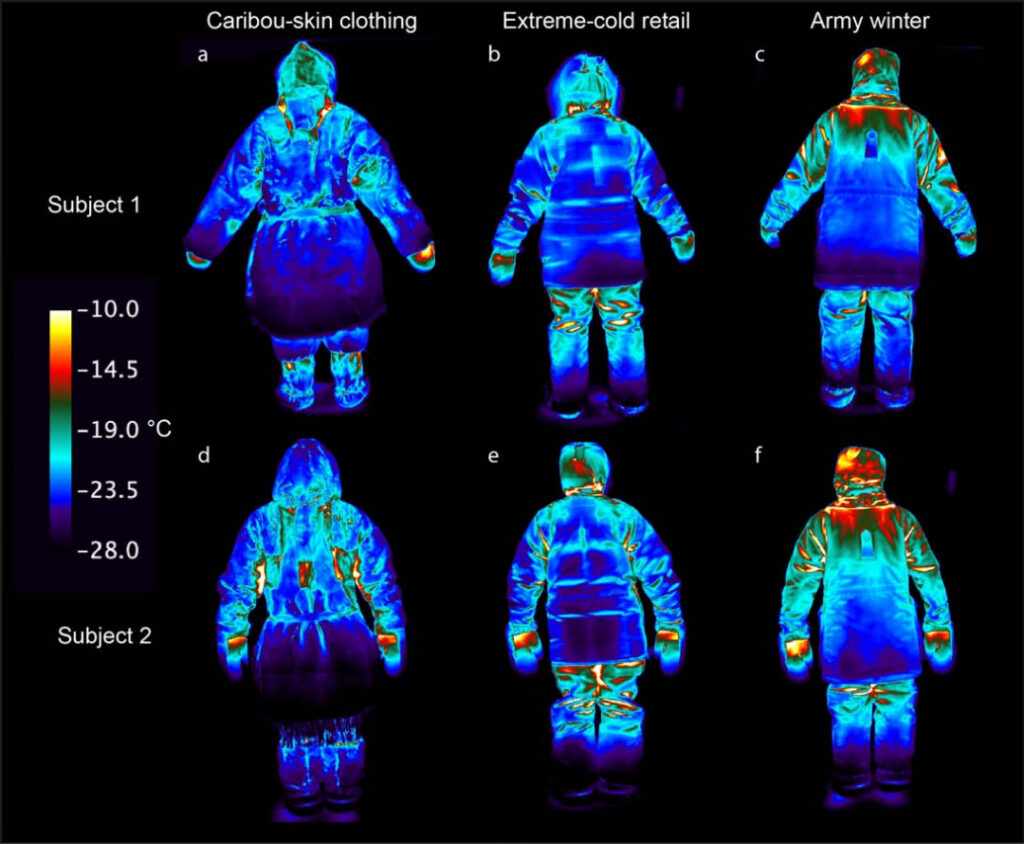
The Inuit peoples who have lived in the Arctic regions for centuries and millennia have adapted physiologically as well as culturally and socially to the harsh conditions of the north. And despite the differences of the various peoples, some aspects have run through the cultures like a common thread. This includes clothing made from reindeer skins, which are used by indigenous people everywhere in the Arctic from Russia to Norway. Researchers have now scientifically proven that this traditional clothing protects the human body from cooling better than the expensive equipment used by the military.
Using thermal imaging cameras, the team led by Richard Hill of Michigan State University compared the insulating effect of traditionally made reindeer clothing with that of modern down jackets and trousers and military clothing, such as that used by soldiers operating in the Arctic. This showed that modern polar clothing protects the body only slightly worse from heat loss than reindeer clothing. But really surprising was the result when comparing the fur clothes with the expensive military equipment. Here it was shown that a person in military gear was more than 12 percent less insulated than the same person in reindeer clothing. The thermal images also clearly showed where the heat loss primarily occurs: on the head and upper body areas. The researchers also write in their paper that while the head area was the one with the greatest heat loss for all three clothing types.
The researchers exposed one man and one woman each to a cold of around -22°C for one hour under standardized conditions. The test persons wore the appropriate clothing while they were photographed with thermal imaging cameras so that the heat loss over the surface of the clothing could be displayed. In their work, Hill and his colleagues showed that the zippers on modern clothing, especially on the upper body, are largely responsible for heat loss. In the head area, especially the hood is the essential component that should protect against heat loss. Here, too, the superiority of the reindeer skin hoods traditionally worn as a unit with fur trim over the modern parkas with detachable hoods became apparent. The outside temperature of the reindeer hood was practically the same as the ambient temperature, while the temperature of the military version was measured to be up to 8°C higher at the head. This means that a significant part of the body heat is dissipated through the head in military clothing, despite the hood. Another site of heat loss was seen on the inside of the arms. Here, all three types of clothing were affected. Researchers explain this by the compression of the down in modern parkas and by the stretching of the fur during movement.

In the study, published in the journal Arctic this week, the scientists conclude that both physiologically and functionally, traditional reindeer clothing has a clear advantage over modern versions and especially military clothing. On the one hand, it insulates better in sensitive areas, has fewer weak points due to the thickness of the fur and the workmanship, and the removal of body moisture is also better solved than with many modern garments. However, the researchers also write that further comparisons are yet to be made in terms of wind density and for larger movements such as running or working. There is also the question of whether reindeer clothing made from fresh skins is better than older, carefully stored clothing and what the differences are between skins from different species.
Dr Michael Wenger, PolarJournal
Link to the study: Hill et al. (2020) ARCTIC 73(1) 40-52, Thermal Imaging and Physiological Analysis of Cold-Climate Caribou-Skin Clothing







